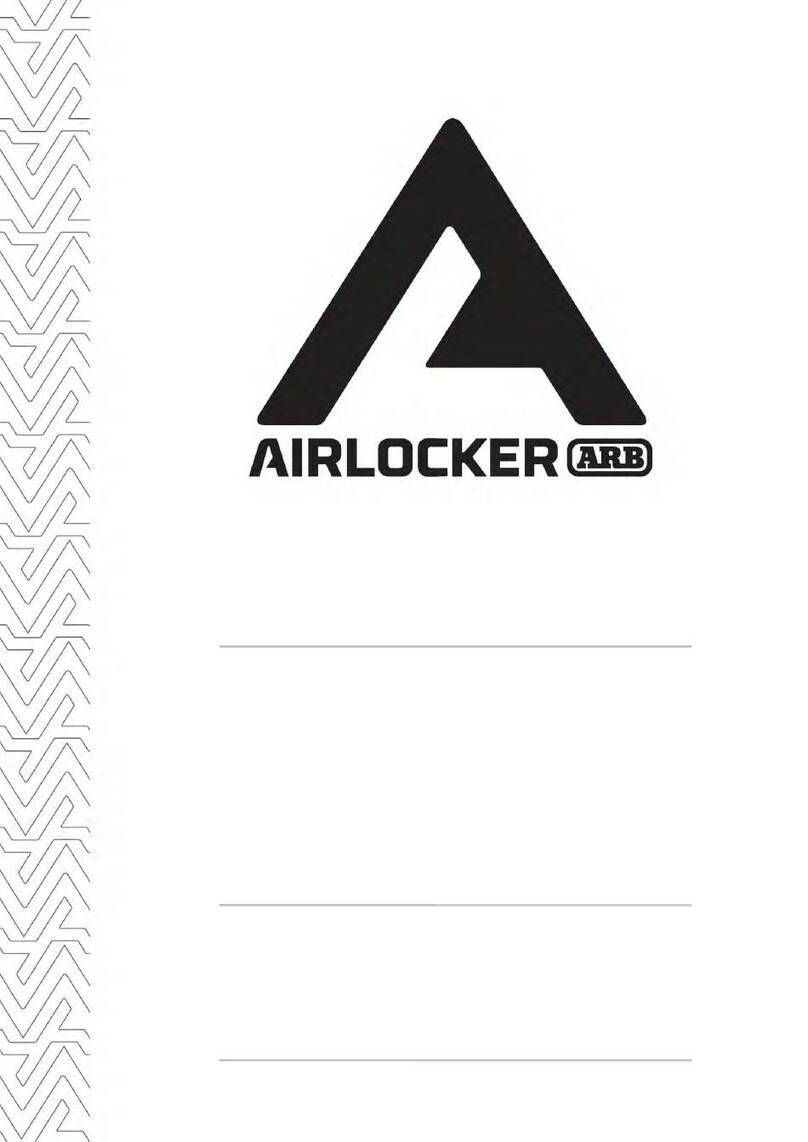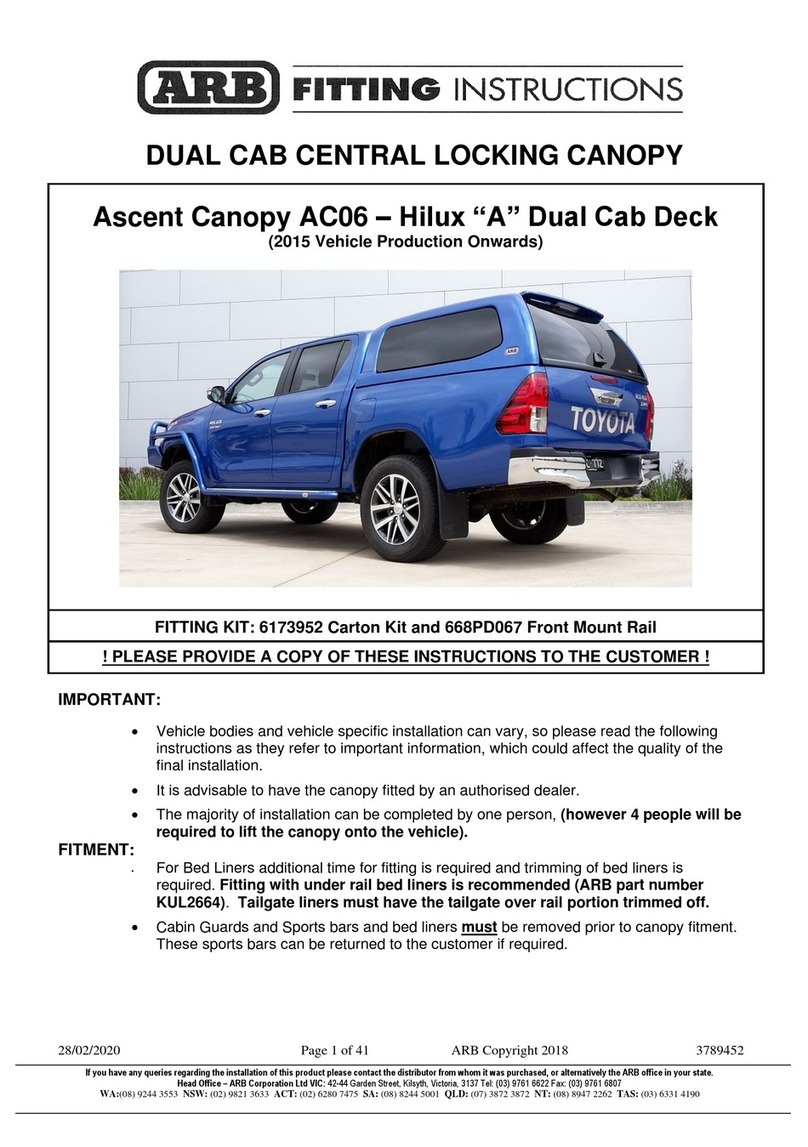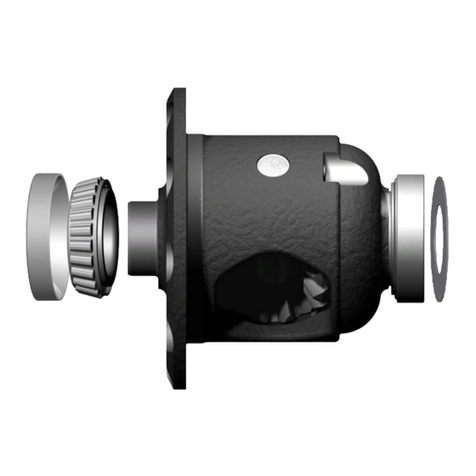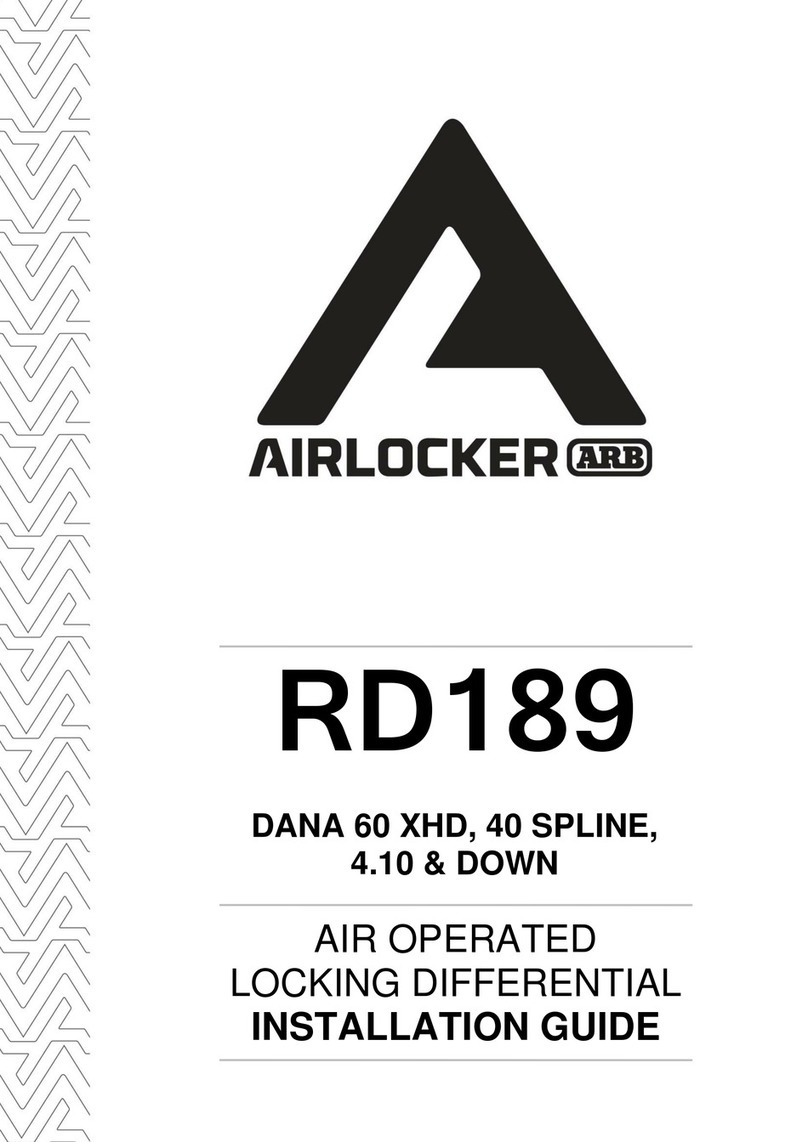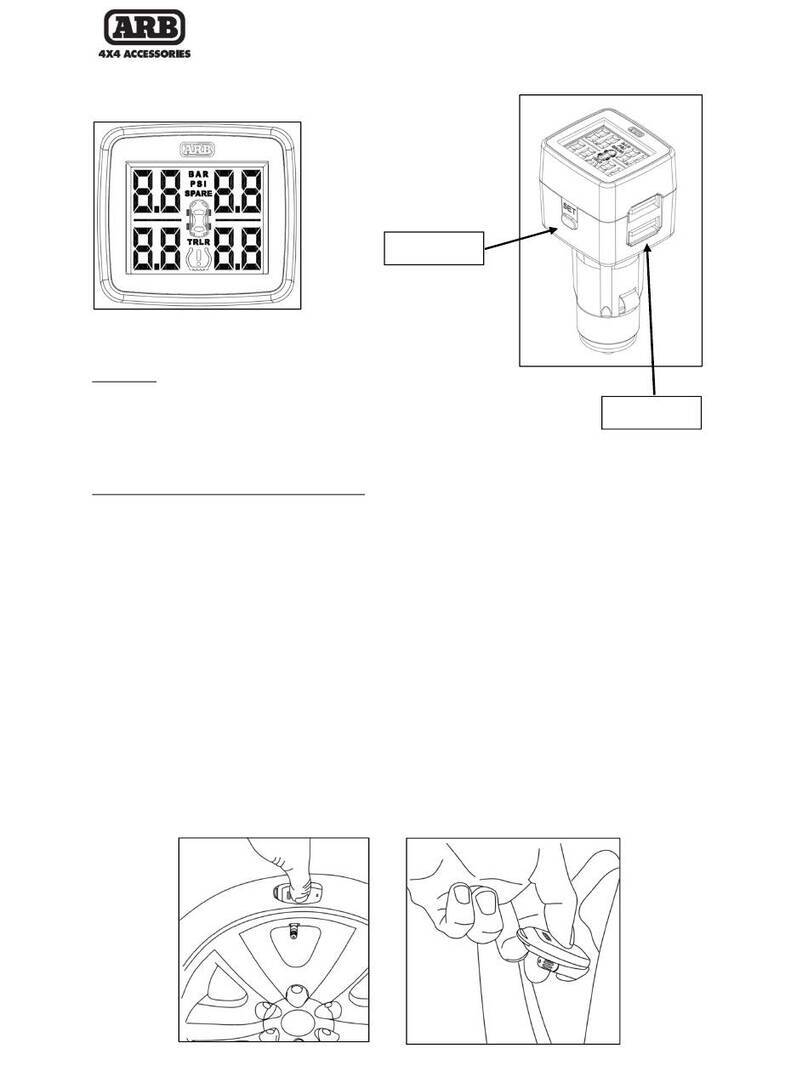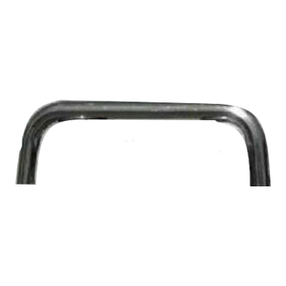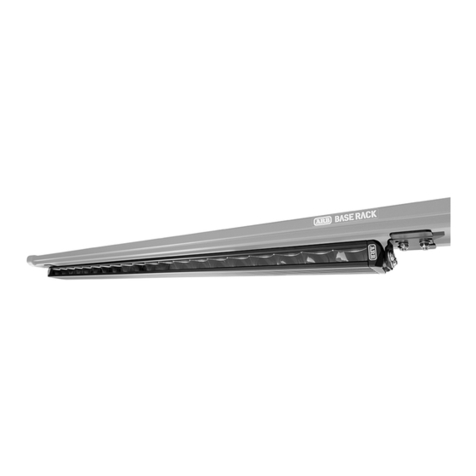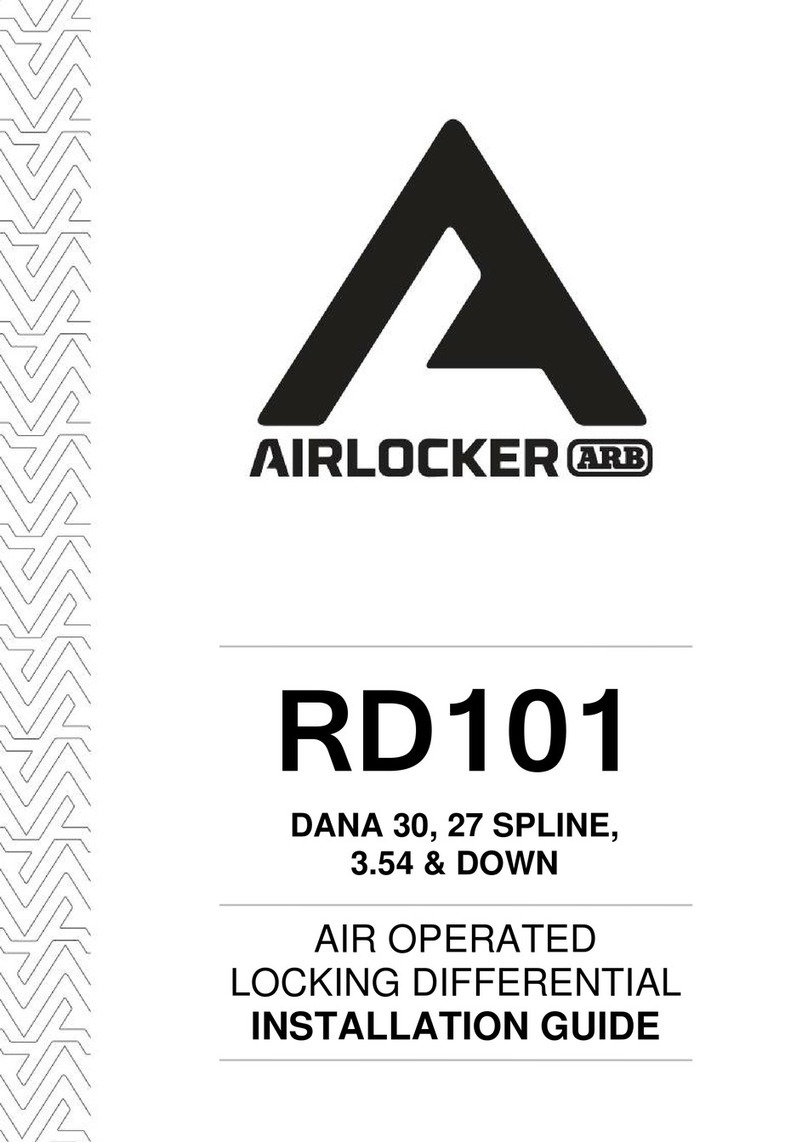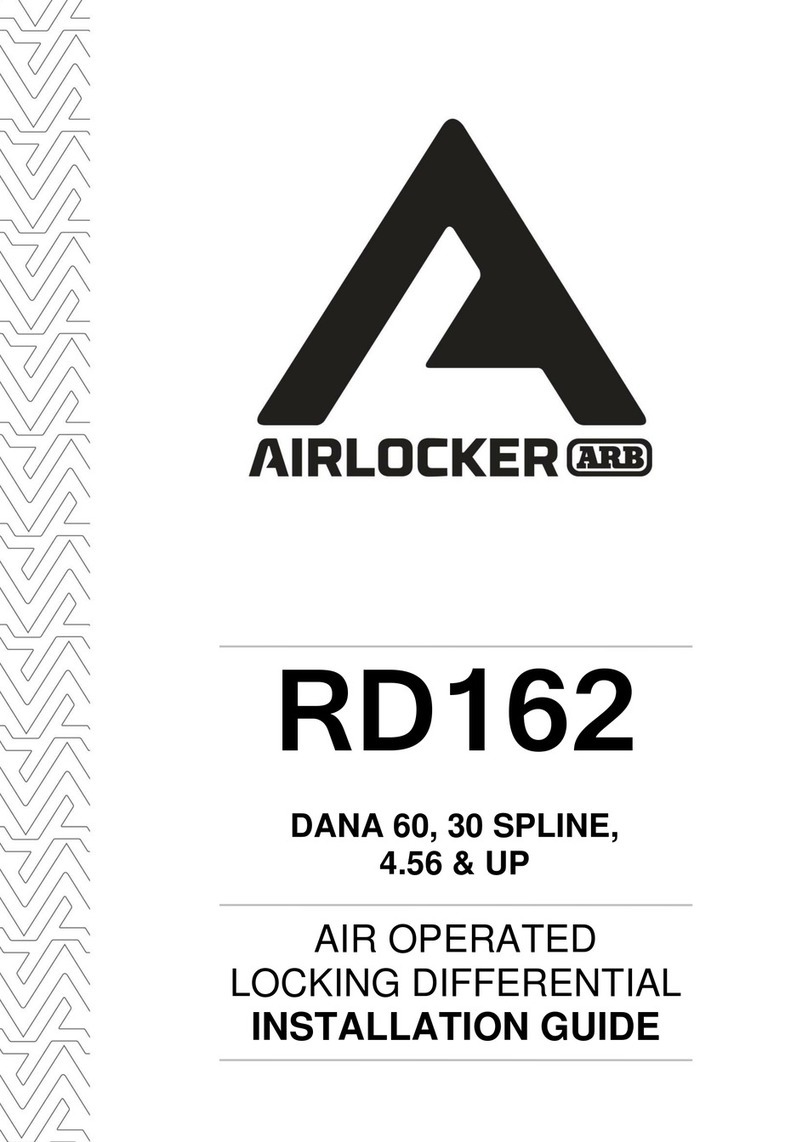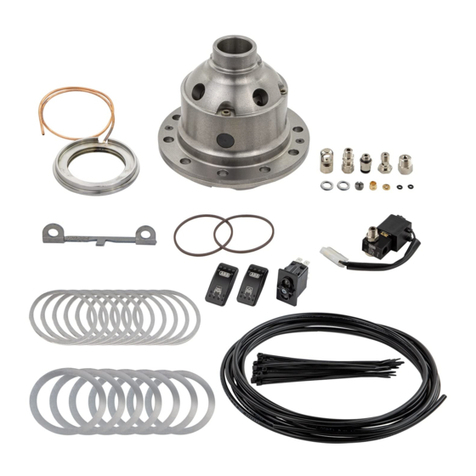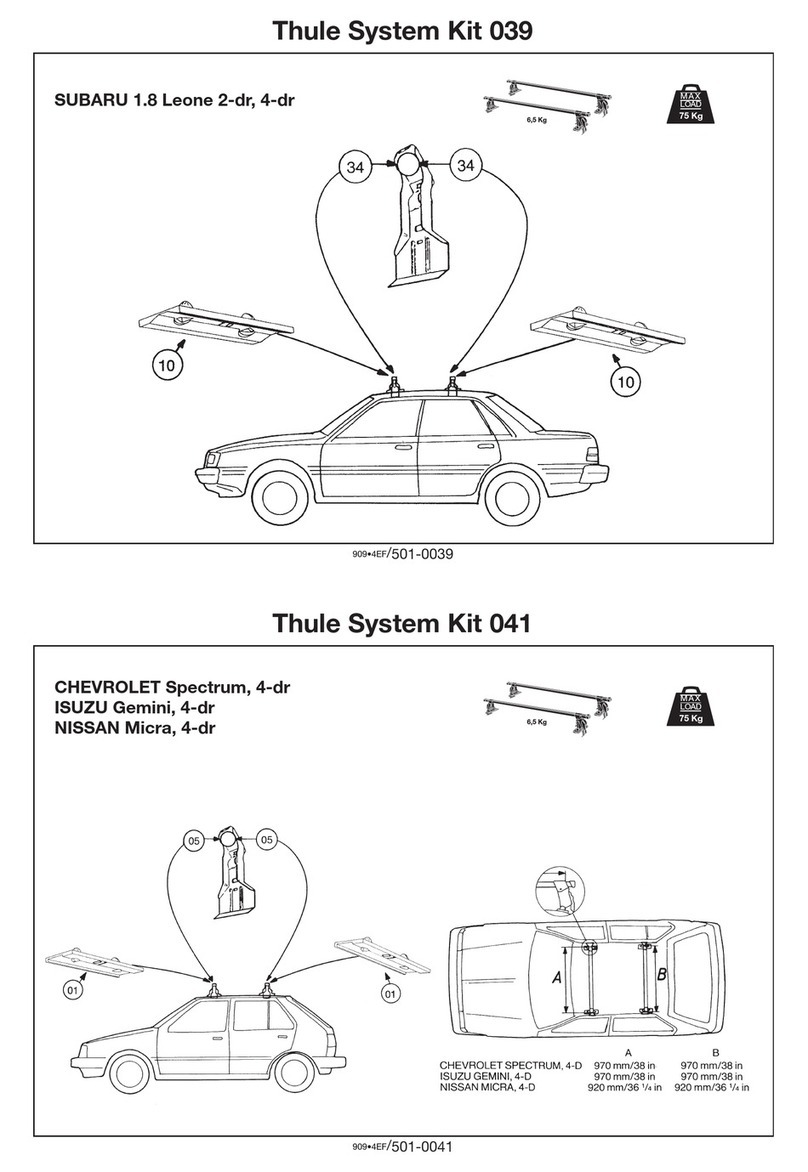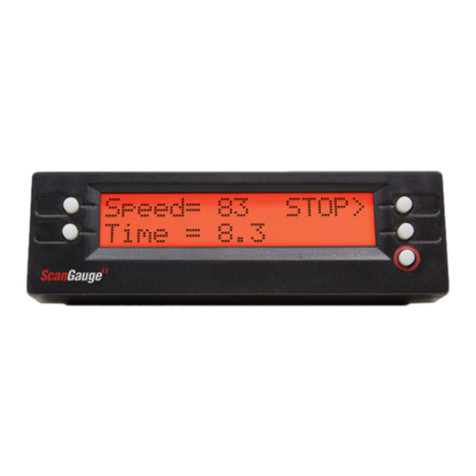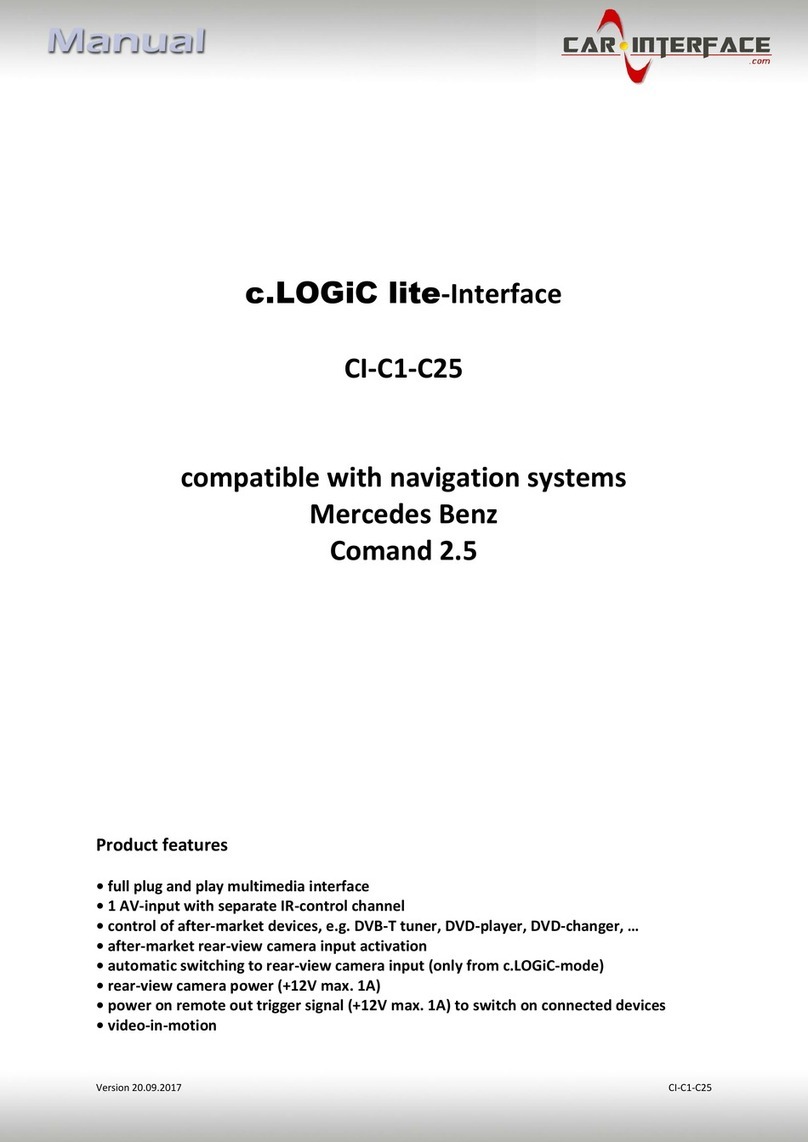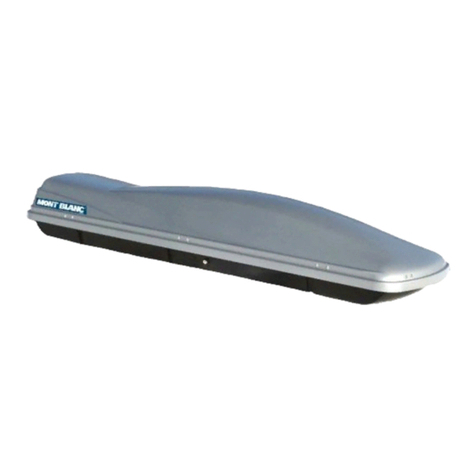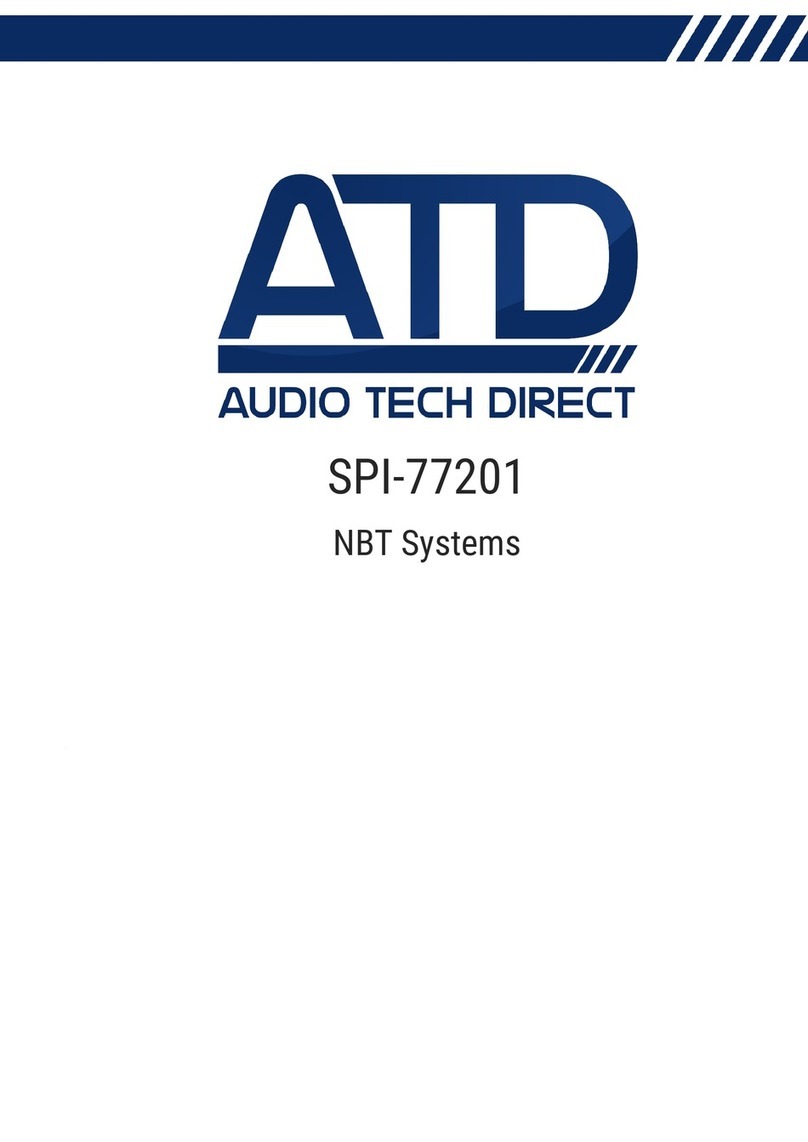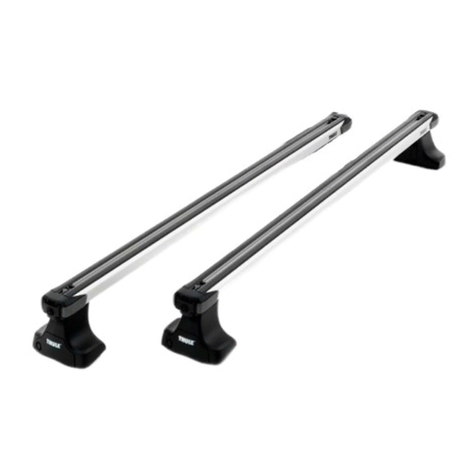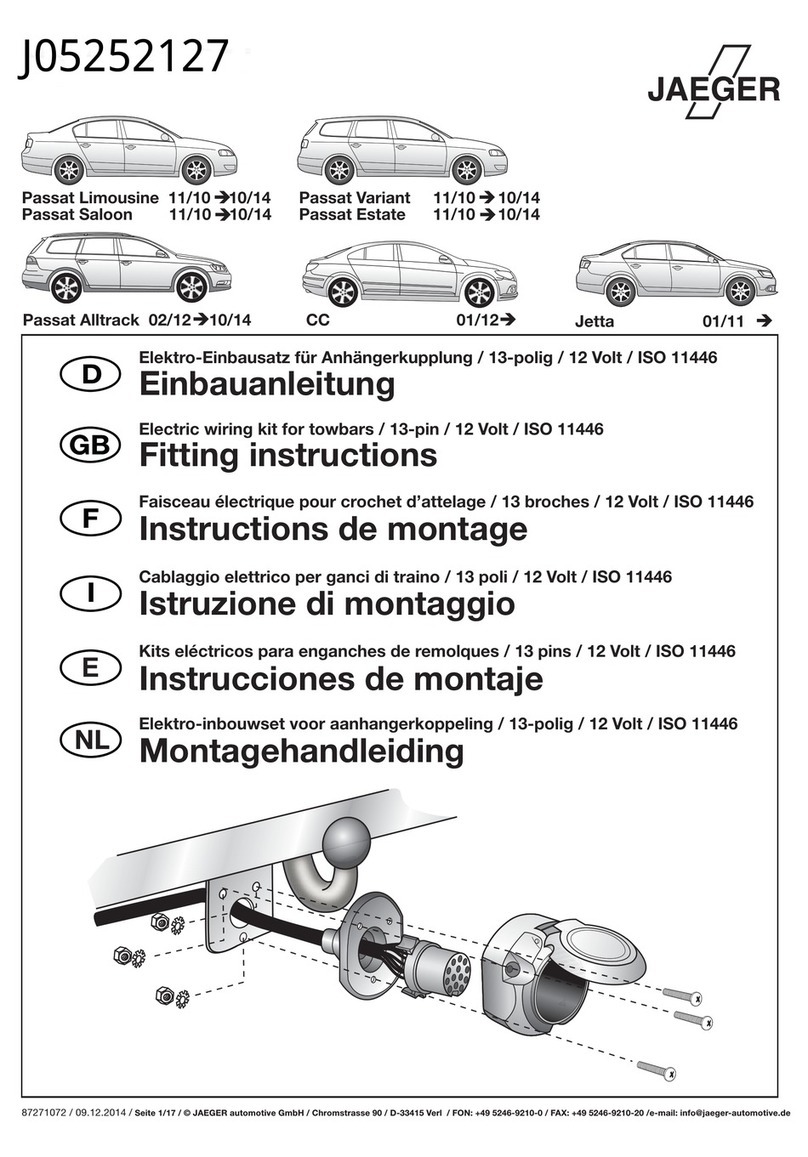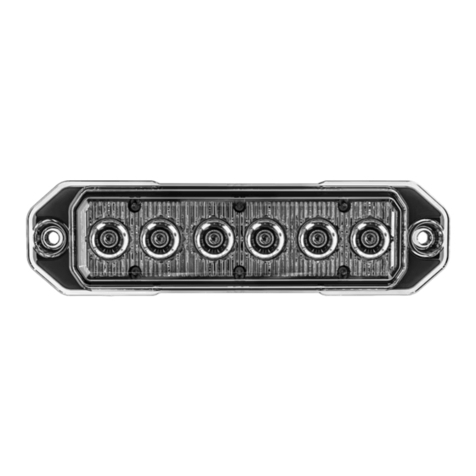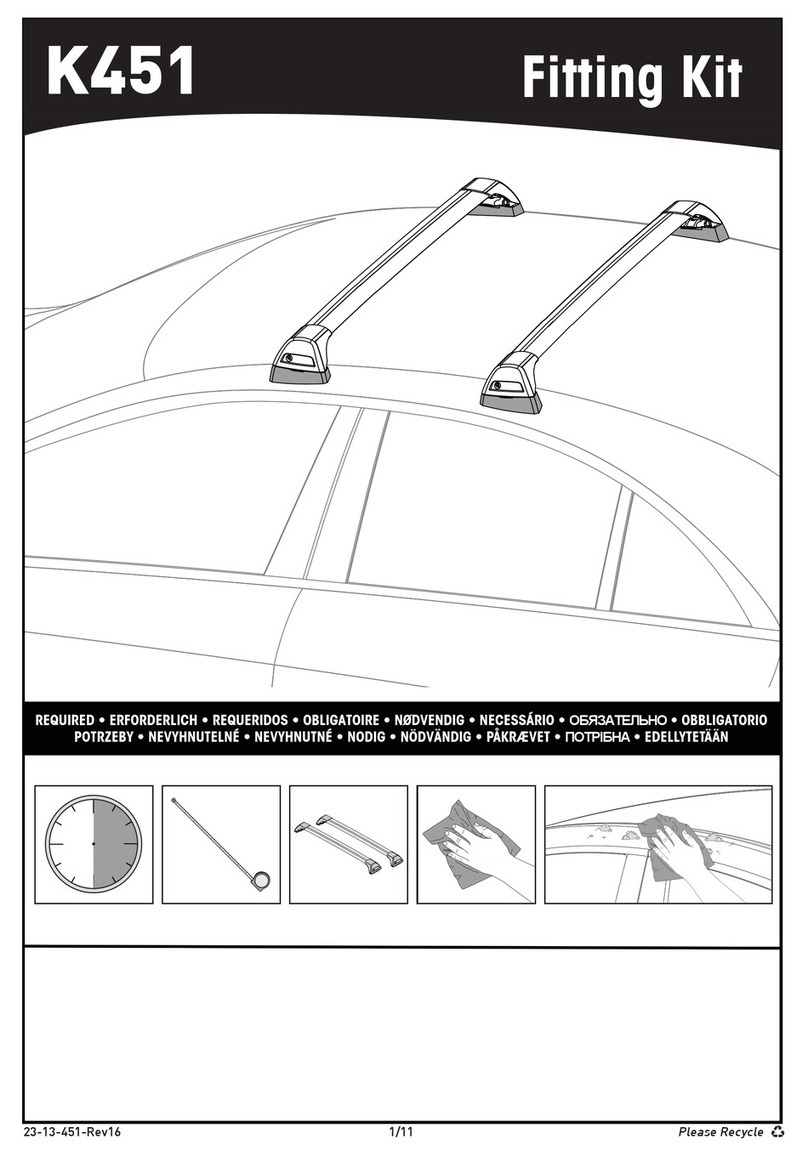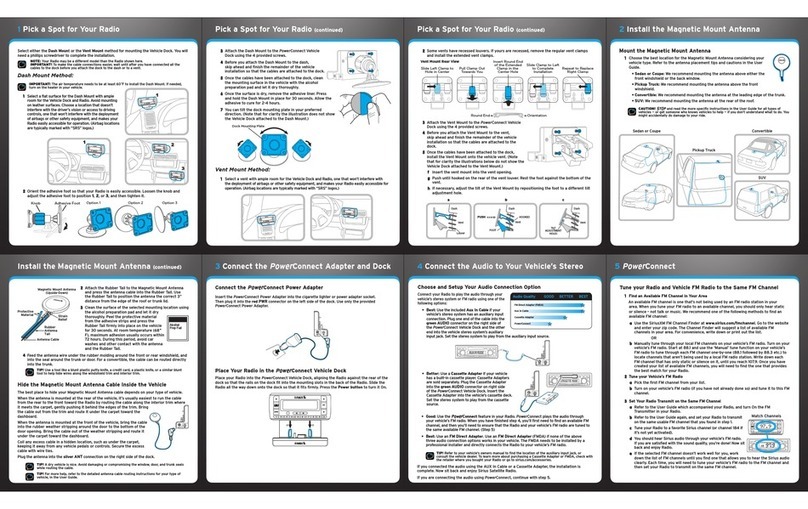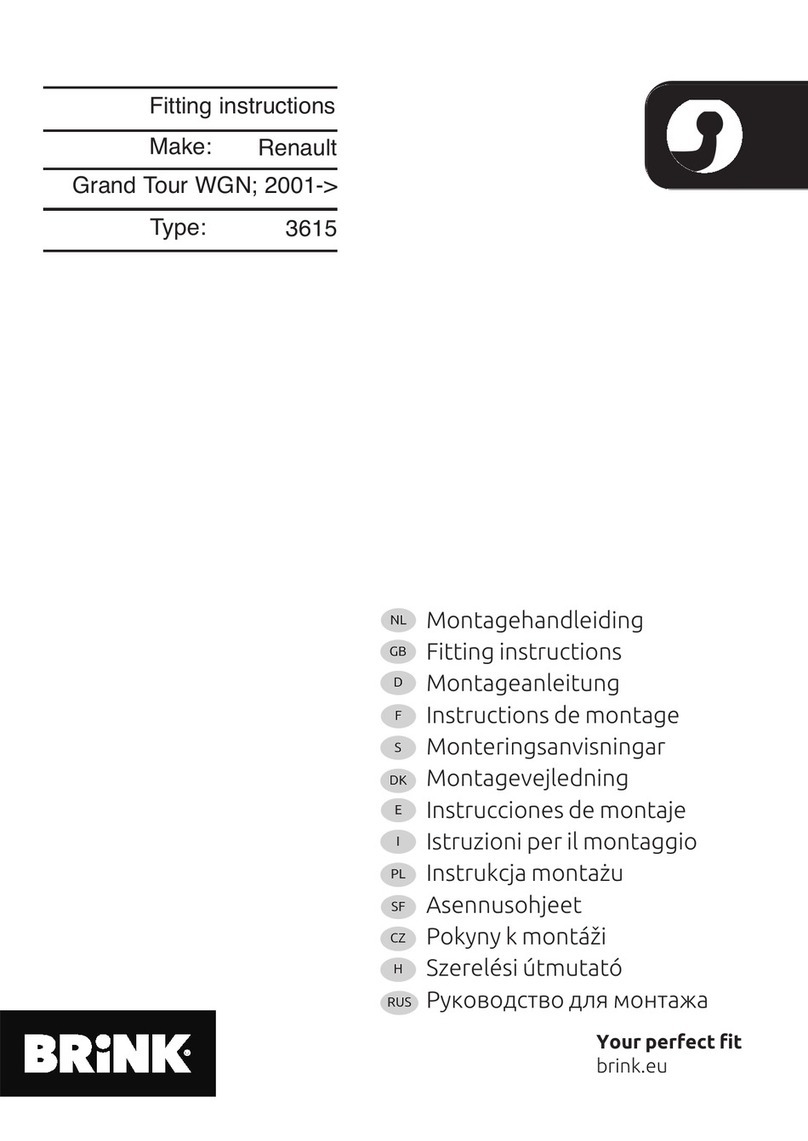ARB Airlocker RD158 User manual

RD158
DANA 50, 30 SPLINE
AIR OPERATED
LOCKING DIFFERENTIAL
INSTALLATION GUIDE

No liability is assumed for damages resulting in the use of the information contained herein.
ARB Air Locker Air Operated Locking Differentials and Air Locker are trademarks of ARB Corporation Limited.
Other product names used herein are for identification purposes only and may be trademarks of their respective owners.
ARB 4x4 ACCESSORIES
Corporate Head Office
42-44 Garden St Tel: +61 (3) 9761 6622
Kilsyth, Victoria Fax: +61 (3) 9761 6807
AUSTRALIA
3137
Australian enquiries sales@arb.com.au
North and South American enquiries sales@arbusa.com
Other international enquiries exports@arb.com.au
www.arb.com.au

Table of Contents:
1
1 Introduction
3
1.1
Pre-Installation Preparation
3
1.2
Tool-Kit Recommendations
4
2 Removing the Existing Differential
5
2.1
Vehicle Support
5
2.2
Differential Fluid Drain
5
2.3
Disconnecting the Axles
6
2.4
Marking the Bearing Caps
6
2.5
Checking the Current Backlash Amount
7
2.6
Removing the Differential Center
8
3 Bench Measurement
9
3.1
Measurement of Pre-Load Shimming
9
3.2
Calculation & Selection of Shims
11
4 Installing the Air Locker
12
4.1
Installing the Carrier Bearings
12
4.2
Mounting the Ring Gear
13
4.3
Drilling and Tapping the Bulkhead Port
14
4.4
Assembling the Differential Carrier
15
4.5
Calculation & Selection of Pre-Load Shims
16
4.6
Reinstalling the Bearing Caps
17
4.7
Checking the Backlash
18
4.8
Profiling the Seal Housing Tube
19
4.9
Setting Up the Bulkhead Fitting
20
4.10
Leak Testing the Air Locker
21
4.11
Reinstalling the Axles
22
5 Installing the Air System
23
5.1
Mounting the Solenoid
23
5.2
Running & Securing the Air Line
25
5.3
Connection to the Bulkhead Fitting
26
6 Mounting & Connecting the Electrical System
27
6.1
Mounting the Actuator Switch(es)
27
6.2
Wiring the Actuator System
28
7 Testing & Final Assembly
32
7.1
Leak Testing
32
7.2
Testing the Air Locker Actuation
32
7.3
Re-Sealing & Filling the Differential
33
7.4
Post-Installation Check List
34
8 Parts List
35
8.1
Exploded Assembly Diagram
35
8.2
Itemized Parts List
36


3
IMPORTANT :
BEFORE ATTEMPTING TO DISMANTLE YOUR VEHICLE FOR THIS
INSTALLATION, PLEASE READ THIS INSTALLATION GUIDE IN ITS
ENTIRETY, AS WELL AS ALL APPLICABLE SECTIONS OF YOUR
VEHICLE MANUFACTURER’S SERVICE MANUAL.
1.1 Pre-Installation Preparation
This booklet is to be used in conjunction with your vehicle
manufacturer’s service manual. ARB endeavors to account for every
possible variation in vehicle model when publishing its installation
guides, and guides are updated regularly as new model information
becomes available, however, the rapid and globally varied release of
some vehicles makes it difficult to insure that your vehicle model has
been accurately accounted for. In the case of any technical
discrepancies between this guide and your service manual, we
strongly advise that you adhere to the specifications and techniques
as documented in your service manual.
Although your ARB Air Locker comes complete with all the step by
step instructions you will need to supplement your vehicle
manufacturer’s service manual and install your new differential, ARB
recommends that you have your Air Locker installed by a trained
professional. Many ARB distributors around the world have been fully
instructed in Air Locker installations by ARB, and have gained a wealth
of experience and skill from years of performing similar installations.
Once you begin this installation your vehicle will be immobile until all
steps of the installation are complete. Make sure your Air Locker kit is
the correct model for your vehicle and that it contains all of the parts
listed on back cover of this booklet. Also be sure you have
appropriately equipped yourself with all the necessary tools, parts, and
materials to complete this installation (see section 1.2 Tool-Kit
Recommendations), and that you have allowed for an appropriate
amount of vehicle down time.
HINT : Place a mark inside each of the
symbols as
you complete each step. It is very important NOT to
miss any of the steps!

4
1.2 Tool-Kit Recommendations
Below is a list of tools and supplies you may need to complete this
installation. Requirements for your vehicle may vary. Please consult
your vehicle service manual for additional recommendations.
1.2.1 Tools
Standard automotive sizes (metric and/or imperial) of sockets,
wrenches, Allen keys, and drills.
A dial indicator or other suitable measuring tool for checking ring &
pinion backlash.
An automotive brake tubing cutter to cut the copper tube.
A razor knife to cut the nylon tubing.
A differential housing spreader (e.g. ARB Spreader #0770003, if
applicable), to facilitate removal of the carrier. (not required on
aluminum housings)
A torque wrench. (See vehicle manual for required torque range.)
A lubricant drain reservoir.
Suitable measuring tools to measure a differential for pre-load
and/or backlash shimming. (e.g. automotive feeler gauge. See
Section 4.5)
An 11.2mm [7/16”] drill and ¼” NPT tap for bulkhead fitting
installation.
An automotive bearing puller (e.g. ARB Bearing Puller #0770001)
or a differential carrier bearing puller.
A bearing press or arbor press.
A suitable shim driver (e.g. ARB Shim Driver #0770004).
A soft hammer (e.g. raw hide or nylon)
1.2.2 Supplies
Thread lubricant/sealant compound (e.g. LOCTITE #567 Teflon
Paste)
Thread locking compound (e.g., LOCTITE #272)
A replacement gasket, or gasket sealant, for your differential cover.
A sufficient volume of differential oil to completely refill your
housing. (see the ARB Air Locker Operating and Service Manual
for recommended lubricants)
A soap and water mixture to test for air leaks.

2 Removing the Existing Differential
5
2.1 Vehicle Support
Safely secure the vehicle on a hoist. We recommend supporting
the vehicle on a chassis hoist to keep the differential area at a
convenient working height and to leave the wheels and axles free
to be rotated and removed.
Once supported off the ground, release the parking brake and
leave the vehicle in neutral. Chock the wheels if necessary.
2.2 Differential Fluid Drain
HINT : This is a good time to check for metal particles in
your oil, on your drain plug, or in the bottom of the
housing which may indicate a worn bearing or
differential component.
Clean around the differential cover plate seal to prevent dirt from
entering the differential.
Position a fluid drain reservoir under the differential.
If a drain plug exists, remove it and completely drain all differential
oil from the housing.
If no drain plug exists then the oil can be drained by loosening the
cover bolts and gently prying the cover away at the bottom until oil
runs out.
HINT : If a drain plug does not exist then it would be a good
idea to drill and tap for a tapered oil drain plug to assist
with future oil changes.
Once drained, remove the differential cover plate.

2 Removing the Existing Differential
6
2.3 Disconnecting the Axles
IMPORTANT :
Collision damage or heavy off-road use of your vehicle in the past may
have resulted in some degree of bending in the axle. Any misalignment
of the axle tubes may result in excessive wear and/or failure of your
differential and axle shafts. ARB strongly recommends that you have
your axle assembly inspected for concentricity and straightness before
installing your Air Locker.
Remove the wheels, and brakes according to your vehicle
manufacturer’s service manual.
Disconnect the drive shaft from the differential drive flange.
Remove both axle shafts according to your vehicle manufacturer’s
service manual.
NOTE : The axle oil seals are delicate and can be easily
damaged. Support the weight of the axle shaft when
drawing them out of their sockets in the housing.
2.4 Marking the Bearing Caps
Using a pointed center punch, gently mark the bearing caps in a
way that will enable you to know which cap is ‘LEFT’ and which cap
is ‘RIGHT’, which way is ‘UP’ and which way is ‘DOWN’. (Fig.1.)
HINT : Many installers choose to make one punch mark on
the left hand side of the left hand bearing cap and one
similar punch mark on the housing at close proximity to
the cap mark. The right hand side is then designated
with two punch marks on the right hand side of the cap
and two similar punch marks on the housing.
Figure 1.

2 Removing the Existing Differential
7
2.5 Checking the Current Backlash Amount
IMPORTANT:
This step is a precautionary measure recommended by ARB due
to the fact that some after market ring and pinion sets have been
manufactured to run with different backlash settings than those
specified by your vehicle manufacturer. Although ARB must
recommend you set backlash according to your service manual
guidelines, we also advise that you compare the backlash
measurements taken here to the recommended backlash settings
in your vehicle service manual. Measurements found to be
outside of your service manual recommendations may indicate
the need to deviate from those settings in order to achieve quiet
running with a good contact mark.
Refer to your vehicle service manual or your local authorized
ARB installer for more information.
Set a depth indicator on one of the ring gear teeth as in figure 2.
Figure 2.
While supporting the pinion gear by holding the drive shaft flange,
rotate the differential in both directions while observing the
maximum variation in depth from the indicator (i.e., the highest
value minus the lowest value). This value is referred to as the ring
and pinion backlash.
Rotate the differential center 90°and measure again for accuracy.
Record the average of all measurements.

2 Removing the Existing Differential
8
2.6 Removing the Differential Center
IMPORTANT:
SPREAD THE HOUSING FOR REMOVAL AND INSTALLATION OF
DIFFERENTIALS (IF APPLICABLE)
Spreading the differential housing with a differential case
spreader is a step which is critical to set up bearing pre-load
on cast iron differential housings (See Figure 3.). Improper
pre-load will result in undue bearing wear, increased stresses
in the differential center, increased running noise, and
ultimately, ring and pinion gear damage.
Unbolt and remove both bearing caps from the differential housing.
HINT : Be sure not to mix up the left and right hand bearing
cups. Later it will be necessary to know which cup
came from which side.
Carefully spread the housing (Fig.3.) enough to remove the
differential center. (Refer to your vehicle’s service manual).
NOTE : Do not spread the housing more than 0.50mm [0.020”].
Once the housing has been adequately spread, the differential may
be removed by pulling forward on the differential carrier.
Figure 3.
NOTE : The differential center is heavy and quite difficult to
handle when covered in oil. Take care not to drop it.
Relieve any tension on the spreader immediately after the
differential has been removed.

3 Bench Measurement
9
3.1 Measurement of Pre-Load Shimming
In order to reproduce a similar pre-load and ring and pinion backlash
in your Air Locker to that of your original differential, measurements
need to be taken so that a shim thickness can be calculated.
Secure the differential to a work bench.
Remove the bolts that hold the ring gear in
place.
Using a plastic or copper hammer, tap in a
circle around the ring gear to separate it
from the differential carrier.
Remove the original bearings from the
differential center using a bearing puller
(Fig. 4.).
NOTE : Keep the bearings and shims
separated so that they can be
identified as to which end of the
differential they came from.
Examine the bearing cups and cones from Fig. 5. for damage or wear
and, if necessary, discard them and replace with the same size and
type of bearings.
Figure 5.
Figure 4.

3 Bench Measurement
10
Figure 6.
Using a caliper or similarly accurate measurement method
(i.e., able to take accurate measurements within 0.04mm [0.0015”]),
measure the distance from the shoulder of the bearing journal to
the ring gear mounting face (shown as ‘A’ in Fig. 5.) and record this
measurement as ‘A’.
Measure the thickness of the factory shim removed from the end of
the differential carrier (shown as ‘B’ in Fig. 5.) and record this
measurement as ‘B’.
Measure the distance from the Air Locker bearing shoulder to the
ring gear mounting face (shown as ‘C’ in Fig. 6.) and record this
measurement as ‘C’.
AIR LOCKER DIFFERENTIAL

3 Bench Measurement
11
3.2 Calculation & Selection of Shims
Ideally, the measurement you recorded as ‘A’ from the OE differential
will closely match ‘C’on the Air Locker differential (within 0.1mm
[0.004”]). However, quite often these measurements will vary slightly
between one factory differential and the next.
If this is the case you must create a new shim pack thickness by using
the measurements you recorded earlier to find a desired measurement
for ‘D’ in Fig. 6.
Use the following calculation:
A + B – C = D
HINT : If your calculations are correct then the following
equation will also be true:
A + B – C – D = ZERO
To make a shim pack to match the measurement you calculated as ‘D’
you can:
Select shims from the shim kit supplied with your Air Locker kit
Purchase a new shim kit from your vehicle dealer.
Use a universal shim kit available from most drive train
specialists.
NOTE : Never re-use any shims which are damaged or worn.

4 Installing the Air Locker
12
4.1 Installing the Carrier Bearings
With the Air Locker well supported in an arbor press, apply a thin
film of high pressure grease to both bearing journals.
Identify the bearings according to where each was removed from
the OE diff, and allocate them to the correct sides of the Air Locker
respectively.
Press one of the tapered roller bearing cones onto one of the
bearing journals of the Air Locker until the bearing seats firmly
against the bearing journal shoulder (Fig. 7.).
NOTE : Never re-use any bearings which are damaged or
worn.
Invert the Air Locker and press the second bearing cone onto the
opposite bearing journal until the bearing seats firmly against the
bearing journal shoulder.
Figure 7.
NOTE : Do not add any shims between the bearings and the
bearing seat. Shimming of the Air Locker will be
performed with the supplied shim kits and/or the OE
master shims (if any) on the outside of the carrier
bearings.

4 Installing the Air Locker
13
4.2Mounting the Ring Gear
Apply a thin film of high-pressure grease to the ring gear shoulder
of the Air Locker to prevent seizing.
Thoroughly clean any thread locking compound or other foreign
matter from the holes of the ring gear, the threads of the ring gear
bolts, and the mating surfaces of the ring gear and the Air Locker
flange.
NOTE : Rubbing the ring gear mounting face with a flat oil
stone before installation will remove any high spots
around the threads.
Heat the ring gear to between 80 and 100°C (175 - 212°F) in an
oven or in hot water to slightly expand the gear and facilitate
assembly.
NOTE : NEVER HEAT GEARS WITH A FLAME! This could
damage the hardened surface of the gear and result in
premature wear or failure.
Dry the ring gear with compressed air (if wet), paying particular
attention to the threaded holes.
Install the ring gear onto the Air Locker by aligning the holes in the
flange with the tapped holes in the ring gear, then gently tapping it
around in a circle with a plastic or copper hammer.
NOTE : Avoid using the bolts to pull down the ring gear as
this puts excess strain on the bolts and the differential
flange.
Apply a thread locking compound to the thread of each ring gear
bolt before inserting it.
NOTE : Do not apply threading compound directly into the
threaded hole as this could prevent the bolt from
reaching its full depth.
Tighten the ring gear bolts in a star pattern with a torque wrench
according to your vehicle manufacturer’s specified torque.

4 Installing the Air Locker
14
4.3Drilling and Tapping the Bulkhead Port
A port must be drilled and tapped through the differential housing to
allow the seal housing tube through the housing to connect with the air
line from the air compressor.
Mark a spot for the bulkhead port on the right hand (diff case) side
toward the top of the differential housing that is in an area that will
be well clear of the ring gear, the differential, and any other
obstructions that may snag the seal housing tube.
Cover the drive pinion and axle tube areas with a rag to protect
them from metal filings.
Figure 8.
Drill through the housing square to the outside surface using an
11.2mm [7/16”] drill. (Fig.8.)
Tap the hole from the outside using a ¼’’ NPT tapered pipe thread
tap.
Remove any sharp edges from the hole that may chip-off and fall
into the housing.
Very carefully remove rags and inspect with a service light inside
the housing to insure no metal filings are left behind.

4 Installing the Air Locker
15
4.4 Assembling the Differential Carrier
Figure 9.
Clean all parts of the differential assembly. It is very important to
make sure the bearings, seal housing internal walls and the shims
surfaces are free from any contaminants (e.g. water, dirt, metal
fillings etc.)
Place the bearing cup over the bearing cone, then ARB master
shim over the cup (Figure 9.).
Generously lubricate the O-rings with oil prior to assembly, then
insert them into the grooves of the seal housing.
With a slight twisting motion, carefully slide the seal housing all the
way onto the bearing journal.
NOTE : The shim pack cannot be installed at this time as the
required thickness (shown as ‘E’ in Figure 9.) has yet
to be determined.
AIR LOCKER DIFFERENTIAL

4 Installing the Air Locker
16
4.5 Calculation & Selection of Pre-Load Shims
In order to pre-load the tapered roller bearings in your Air Locker,
measurements need to be taken so that a value can be calculated for
the shim thickness ‘E’ in Figure 9.
Hold the shim pack, master shim and tapered roller bearing cup in
place on the case side.
Hold the seal housing, master shim and bearing cup on the ring
gear side. Then insert the Air Locker assembly into the differential
housing with the seal housing tube pointing straight out of the
housing.
Install bearing cap on the case side, and finger tighten the bolts.
Push the Air Locker hard across to the case side, and measure the
gap (end float) between the seal housing and the differential
housing with a feeler gauge.
NOTE : This ‘end float’ measurement determines the shim
thickness necessary to achieve ‘neutral pre-load’.
Adding more shim than this measurement becomes
the actual ‘pre-load’.
Consult your vehicle manufacturer’s service manual to determine
the carrier bearing pre-load amount specified for your vehicle.
Add the specified pre-load amount to the measurement taken with
the feeler gauge to determine a shim amount for ‘E’ in Figure 9.
PRE-LOAD + END FLOAT = SHIM PACK
Select suitable shims from the supplied shim kit to make up a shim
pack of this thickness and leave it aside for final assembly.
Remove the Air Locker and assemble the shim pack onto the seal
housing spigot (Figure 9.).
If applicable, spread the differential housing again (Refer Sect 2.6).
NOTE : If the carrier is too difficult to install with the added
shim pack then the spreader tension may need to be
increased. Do not spread the housing more than
0.50mm [0.020”].
Reinstall the Air Locker as before (i.e., with only one bearing cap).
Release all spreader tension.

4 Installing the Air Locker
17
4.6 Reinstalling the Bearing Caps
IMPORTANT:
The ARB master shim must be assembled between the stepped
side of the seal housing and the bearing cup.
NOT HAVING THE ARB MASTER SHIM IN PLACE
HERE WILL CAUSE BEARING FAILURE.
Using a soft instrument such as a wooden drift, bend the seal
housing tube outward and away from the position of the bearing
cap. (Fig.10.)
Figure 10.
NOTE : The seal housing tube should lay as low in the seal
housing groove as possible.
Install the bearing caps oriented as they were marked before they
were removed, and tighten the bearing cap bolts. It is not
necessary to torque them down at this time.
Check that some clearance exists between the bearing cap and the
seal housing tube. If not, the bearing cap should be removed and
the tube re-bent for adequate clearance.
Tighten all bearing cap bolts with a torque wrench to the torque
specified in your vehicle manufacturer’s service manual.
NOTE : Aluminum housings require a smaller torque amount
than a cast iron housing. Make sure you use the
correct torque for your vehicle.

4 Installing the Air Locker
18
4.7 Checking the Backlash
Set a depth indicator on one of the ring gear teeth as in
Figure 11.
While supporting the pinion gear by holding the drive shaft, rotate
the differential in both directions while observing the maximum
variation in depth from the indicator (i.e., the highest value minus
the lowest value). This value is referred to as the ring and pinion
backlash.
Rotate the differential center 90°and measure again for accuracy.
Figure 11.
Refer to your vehicle service manual for the specified maximum
and minimum amounts of backlash. If the backlash is not within the
specifications then the differential will have to be removed and re-
shimmed.
4.7.1 Re-Shimming the Backlash
NOTE : This step is only necessary when adjusting for
incorrect backlash.
Remove the bearing caps.
Remove the differential as before.
NOTE : Never spread the housing on the aluminum models.
Table of contents
Other ARB Automobile Accessories manuals
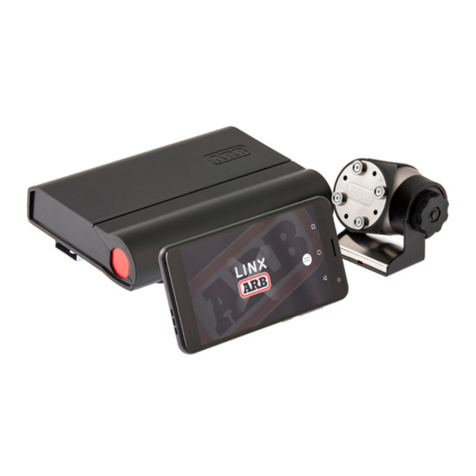
ARB
ARB LINX LX100 User manual
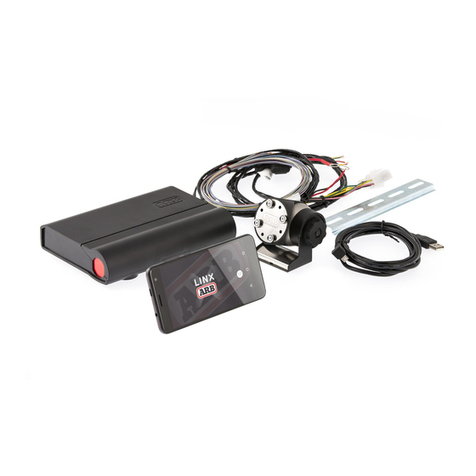
ARB
ARB LINX LX100 User manual
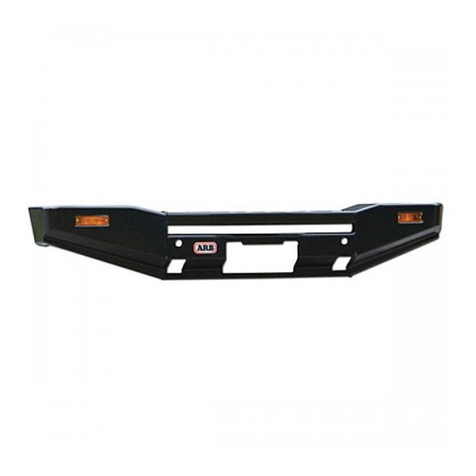
ARB
ARB 3432300 User manual

ARB
ARB Flinders User manual
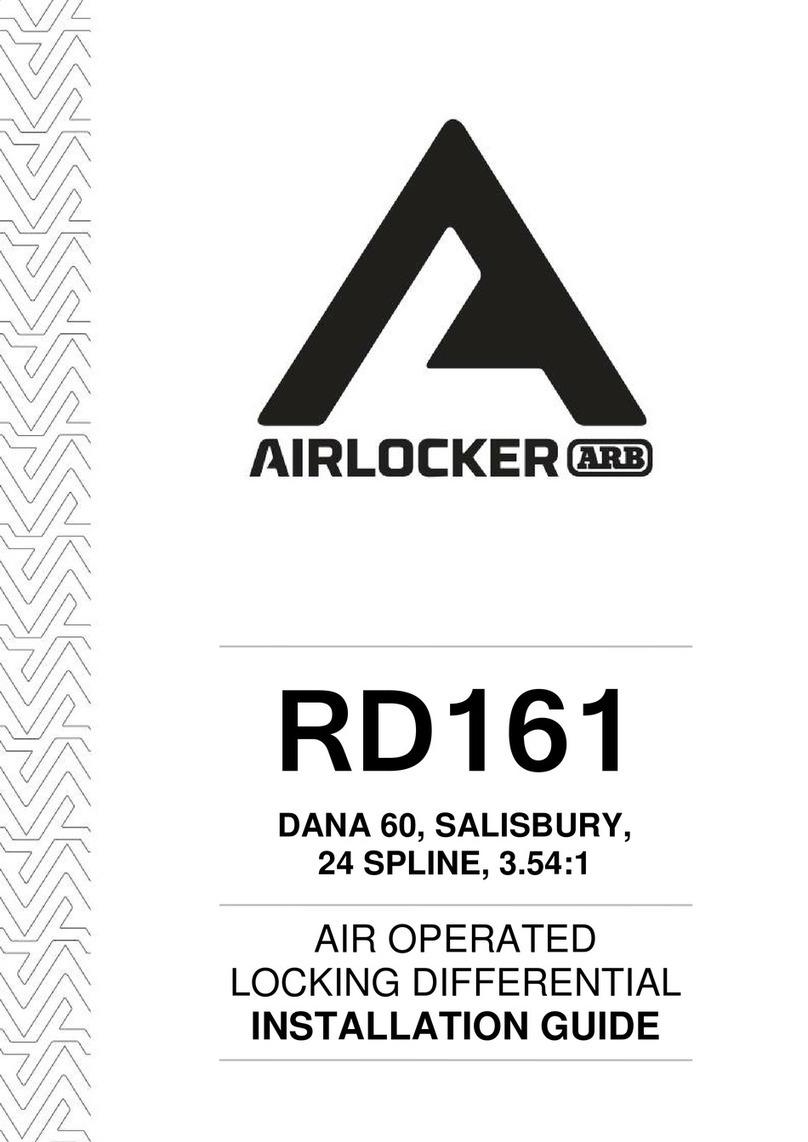
ARB
ARB Airlocker RD161 User manual
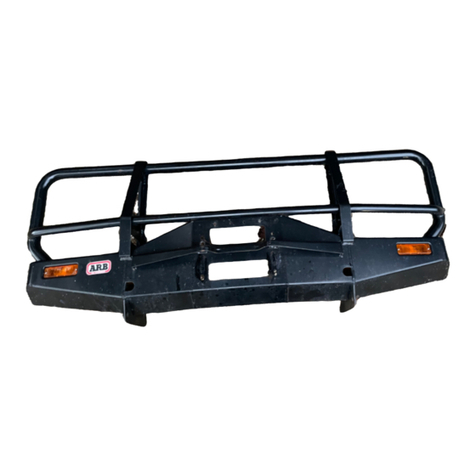
ARB
ARB 3432090 User manual
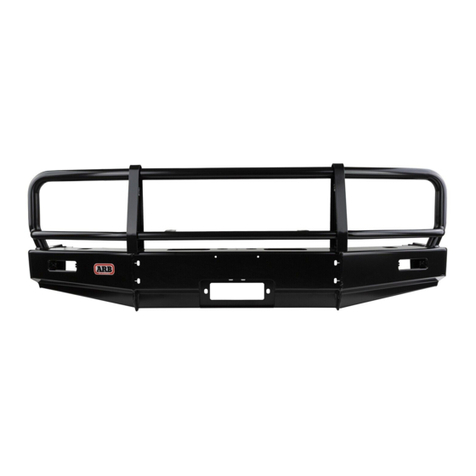
ARB
ARB 3432050 User manual
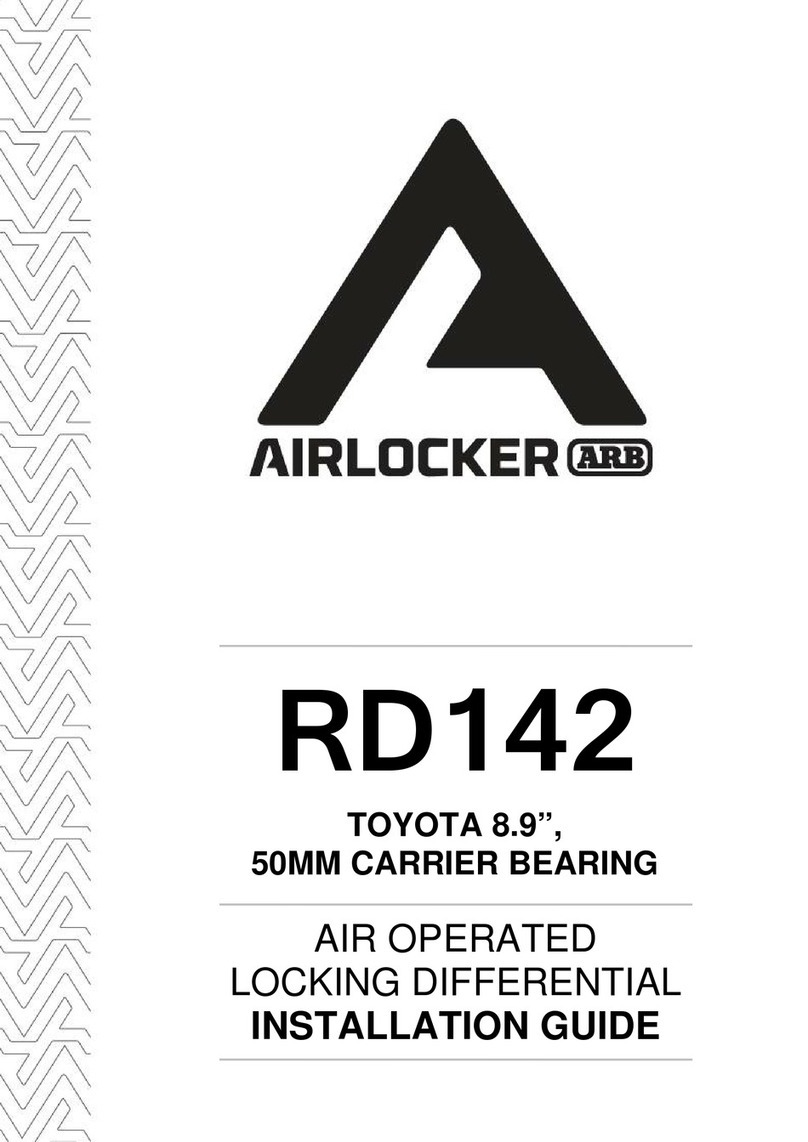
ARB
ARB AIRLOCKER RD142 User manual
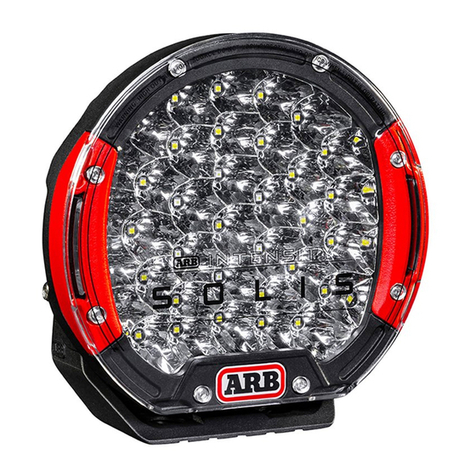
ARB
ARB INTENSITY SOLIS User manual
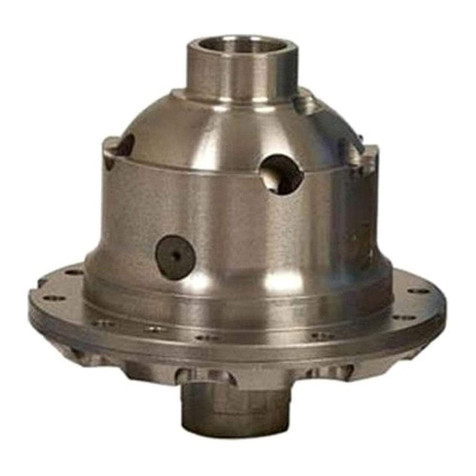
ARB
ARB RD121 Operating and maintenance instructions
